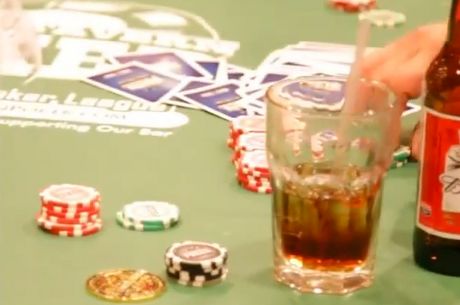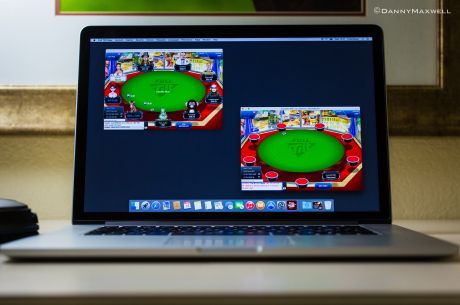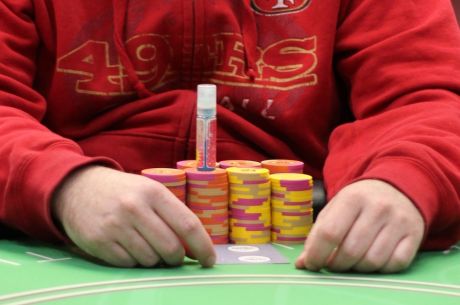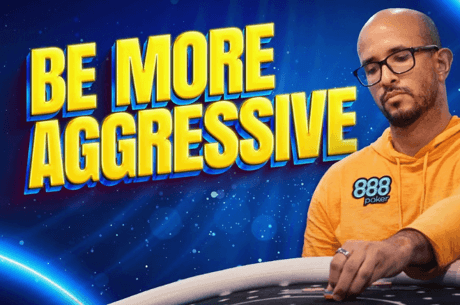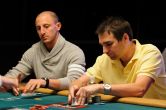In Poker, Being Stubborn as a Mule Can Make You a Donkey
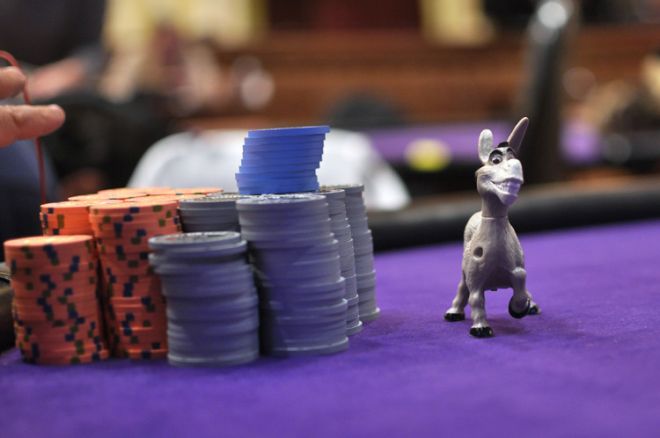
Not long ago I mentioned that I had started reading an interesting book, Brilliant Blunders by Mario Livio. He explores five major mistakes made through the history of science by some of its most prominent figures. One of the stories Livio tells concerns Fred Hoyle, one of the greatest astrophysicists of the 20th century.
Don��t confuse Fred Hoyle with Edmond Hoyle who wrote rule books for card games during the 18th century and is in the Poker Hall of Fame despite having died long before poker was invented. Rather, Fred Hoyle was primarily responsible for deducing how now-extinct stars had been the crucibles in which were made all of the elements that form our world �� a finding that represents an astonishingly intellectual tour de force.
Hoyle is also responsible for coining the term ��big bang�� in reference to what was then a new theory of the universe. But he was actually arguing against it, and poking fun at it. According to this Hoyle, he theorized instead a ��steady state�� model in which matter is being continuously created a little at a time throughout the universe.
This theory has turned out to be wrong. But to his dying day, Hoyle would not let go of his pet theory, in spite of overwhelming evidence against it. As Livio describes it,
Hoyle did nothing wrong in proposing the steady state model��. The theory itself was bold, exceptionally clever, and it matched all the observational facts that existed at the time. Hoyle��s blunder was in his apparently pigheaded, almost infuriating refusal to acknowledge the theory��s demise even as it was being smothered by accumulating contradictory evidence.
Steeped as I am in the world of poker, I tend to see poker parallels everywhere, and this is no exception. Hoyle��s sad story made me think of all the poker players �� myself included �� who have stubbornly stuck with a hand, ignoring overwhelming evidence that it should be tossed in the muck. Let me share two such stories.
An Example of Ignoring Observational Facts
The first occurred in a $1/$2 no-limit hold��em game at the Orleans casino in Las Vegas several years ago.
I was in late position with KxQx-offsuit and put in a raise. Player B called from the button, as did Player A from one of the blinds. The flop was Ax10x7x rainbow. I didn��t like that much, but when Player A checked, I put in a standard continuation bet, hoping both opponents would credit me with an ace and go away.
That didn��t happen. First Player B on the button called, then, to make matters worse, Player A check-raised all in. I had seen him check-raise a couple of times before, but never all in, and never against two opponents. He had the biggest stack at the table, over $400.
I was outta there as fast as I could throw my cards away. But Player B started seriously contemplating a call. After maybe 30 seconds, Player A threw him a bone. He spread out his two hole cards face down and said, ��You can pick either one to look at.�� Player B picked the one on his left �� a 10x.
Let��s review the evidence to this point. Player A had been playing absolutely no-nonsense poker, showing down only winners. Here he had called a preflop raise from out of position, then followed that with an all-in check-raise versus two opponents. To top it off, he was confident enough of his hand to let an opponent pick one card to look at, and it��s a pair to the board.
Unless Player A has just had a stroke or ingested LSD with his last Perrier, the bare minimum he has here is two pair, and it shouldn��t surprise anybody if he were to turn over pocket tens for a set. Of course, in theory he could be bluffing �� but would any sensible player bet his stack on that possibility?
Well, as it turned out, Player B wasn��t such a sensible player. After some tank time, he called �� and showed Q?2? (!). I��m not joking. You can see why this hand still sticks with me, tucked away in a corner of mind labeled ��Worst Call Ever.�� He couldn��t even beat one pair, but like Fred Hoyle had somehow found a way to stick with a theory that supported calling while blatantly ignoring the evidence before him.
Player A turned over an ace for Ax10x �� two pair. There was one diamond on the board, but it probably will not surprise you to hear that poor Player B did not hit any runner-runner miracle and lost the hand.
Another Refusal to Accept Contradictory Evidence
Before I get myself feeling too superior to the Player Bs of the world, though, I have to tell you that I have occasionally been just as foolishly stubborn with a hand that I should have let go.
The one I remember most vividly happened at the Venetian in another $1/$2 NLHE game. I held the A?, and the first four cards on the board had come 3?4?6?, then 7?. This gave me an ace-high flush, but I would obviously lose if somebody had the 5?.
I bet, and the only opponent left in the hand raised. He was no fool. I had played with him long enough to know that he was not prone to spewing off his chips lightly. I really couldn��t see any way that he could plausibly have anything but the 5? here. With any flush lower than mine and any non-flush hand, he would either fold or just call, worried that I had either the A? or the 5?.
Nevertheless, I called his raise. The only reason I can give you �� and it isn��t a good one �� is that I had an ace-high flush, and didn��t want to admit defeat.
The river was something irrelevant �� not a pair to the board �� leaving the situation unchanged. I checked. He bet. Being all Fred Hoyle-like, I again refused to accept the evidence at face value. I remember having the thought that he might be using the obvious straight-flush possibility as a total bluff to scare me out of the chips that were rightfully mine by virtue of my ace-high flush.
And on that shaky reasoning, I moved all in.
Yeah, you already know what happens next �� the big bang of my opponent instacalling. He turned over his cards, and I already knew, somewhere deep down, that one of them had to be... the 5?.
Conclusion
Stubbornness can be an excellent quality in a scientist. It can keep him working at a difficult problem long after others have given up. It can impel him to find evidence to support an unpopular idea, just to prove to all his doubters that he had been correct all along.
But there comes a point when stubbornness turns from an asset into a liability, when it causes the scientist to stop being objective about the state of the evidence and make a stand on ever-shakier ground. At that point he effectively stops being a scientist and becomes a crank, a crackpot.
So, too, with poker players. If you��re so timid you run at the first sign of strength from an opponent, you��ll get eaten alive by the bluffers. You��ve got to have the temerity to call them down when their stories don��t smell right.
But at the same time, you have to know when to let it go. You have to learn to recognize when the evidence is clear enough that your hand is no good. Then you have to have the fortitude to act on that recognition, and release your cards.
In other words, being stubborn as a mule in poker is a good way to become a donkey.
Robert Woolley lives in Asheville, NC. He spent several years in Las Vegas and chronicled his life in poker on the ��Poker Grump�� blog.
Want to stay atop all the latest in the poker world? If so, make sure to get PokerNews updates on your social media outlets. Follow us on Twitter and find us on both Facebook and Google+!

